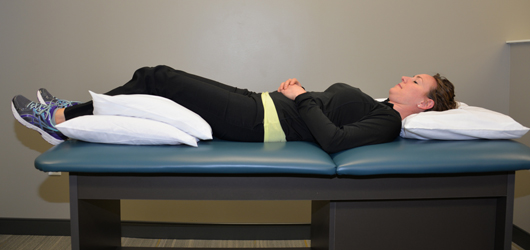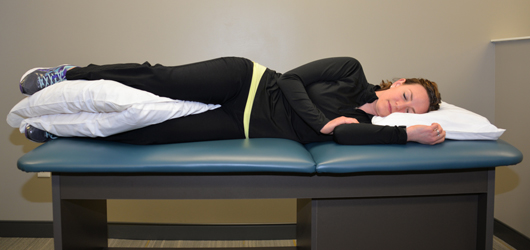
How are you sleeping?
That is one of the first questions Lisa Cleveland, PT, asks her patients at Mayfield Physical Therapy. “Inflammation in the body is greater at night,” Ms. Cleveland says. “We want to find ways to settle things down so that you can be comfortable.”
One of best ways involves one or more pillows. Used properly, pillows can provide support and can ease pain in the neck or back, helping to provide a good night’s sleep.
“There are two basic sleeping positions,” Ms. Cleveland says. “One is supine, which means lying on your back. In this position, we want you to support both your head and neck. The biggest error that patients make is using the pillow to support their head but not their neck. The bulk of the pillow should be at the curvature of the neck.”
When patients sleep on their side, Ms. Cleveland offers the same advice. “We tell them to bunch up the pillow more under their neck than their head.”
The Mayfield PT team also helps patients discover the optimal alignment for sleep.
When lying on your back:
- Use a pillow to support your head and neck.
- You can stretch out your arms, palms up, and rest them on pillows.
- You can place one or more pillows under your knees.

When lying on your side:
- Use a pillow to support your head and neck.
- Your nose should be in line with your belly button, which should be in line with your legs. Your ears should be aligned over your shoulders – the sleeping equivalent of good posture.
- You can place one or more pillows between your legs.
- If you are pregnant or have a heavy stomach, you can place a pillow under your stomach.
- You can hug a pillow.
These guidelines also apply to patients who have generalized joint pain, including hip pain.
Sometimes patients tell Ms. Cleveland that if they lie on their side, their arms go to sleep. “There could be several reasons for that,” she says. “It could be that the head is too high or too low. A pillow that’s too high could create symptoms.”
Patients who suffer extreme postures might not be able to sleep in an ideal alignment. “A person whose head is bent forward will not be able to do this,” Ms. Cleveland says. “If I tell them they have to sleep like this, they will be miserable and probably won’t be able to get any rest. If this is the case, we work slowly with them.
“Nighttime is not the time to be causing yourself unnecessary pain. The time to be actively pushing yourself is with therapy and during your home exercise program.”
Ms. Cleveland is flexible regarding pillow types. “I always tell patients that it’s all self-preference. I can’t say which is best: hard, soft, fluffy, or down. The most important thing is getting into a line that will keep you in a proper position. Sleep is important for the body’s healing.”
— Cindy Starr